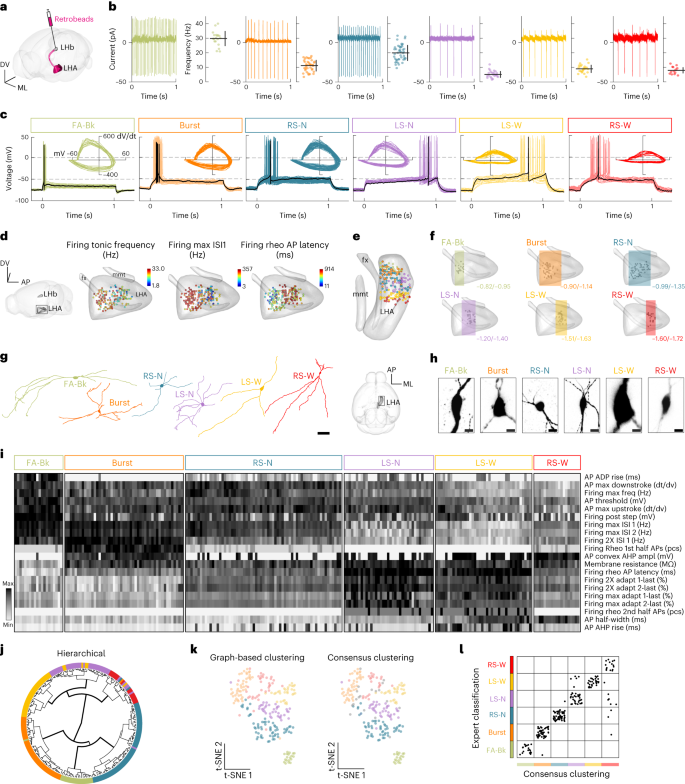2023-06-22 カロリンスカ研究所(KI)
◆研究者たちは、マウスの脳内において視床下部からハベヌラに至る特定の神経経路をマッピングすることに成功し、この経路が回避行動を制御していることを確認しました。さらに、これらの神経細胞はエストロゲンに敏感であり、女性マウスが男性よりも持続的なストレス反応を示すことを示唆しています。
◆この研究は、感情や行動を制御する神経経路や神経細胞を特定するために先進的な技術がどのように活用されるかを示す例であり、うつ病などの感情障害の新たな薬物治療の可能性を開くものです。
<関連情報>
- https://news.ki.se/chronic-stress-related-neurons-identified
- https://www.nature.com/articles/s41593-023-01367-8
Esr1+視床下部-ハベヌラ神経細胞が回避状態を形成する Esr1+ hypothalamic-habenula neurons shape aversive states
Daniela Calvigioni,Janos Fuzik,Pierre Le Merre,Marina Slashcheva,Felix Jung,Cantin Ortiz,Antonio Lentini,Veronika Csillag,Marta Graziano,Ifigeneia Nikolakopoulou,Moritz Weglage,Iakovos Lazaridis,Hoseok Kim,Irene Lenzi,Hyunsoo Park,Björn Reinius,Marie Carlén & Konstantinos Meletis
Nature Neuroscience Published:22 June 2023
DOI:https://doi.org/10.1038/s41593-023-01367-8

Abstract
Excitatory projections from the lateral hypothalamic area (LHA) to the lateral habenula (LHb) drive aversive responses. We used patch-sequencing (Patch-seq) guided multimodal classification to define the structural and functional heterogeneity of the LHA–LHb pathway. Our classification identified six glutamatergic neuron types with unique electrophysiological properties, molecular profiles and projection patterns. We found that genetically defined LHA–LHb neurons signal distinct aspects of emotional or naturalistic behaviors, such as estrogen receptor 1-expressing (Esr1+) LHA–LHb neurons induce aversion, whereas neuropeptide Y-expressing (Npy+) LHA–LHb neurons control rearing behavior. Repeated optogenetic drive of Esr1+ LHA–LHb neurons induces a behaviorally persistent aversive state, and large-scale recordings showed a region-specific neural representation of the aversive signals in the prelimbic region of the prefrontal cortex. We further found that exposure to unpredictable mild shocks induced a sex-specific sensitivity to develop a stress state in female mice, which was associated with a specific shift in the intrinsic properties of bursting-type Esr1+ LHA–LHb neurons. In summary, we describe the diversity of LHA–LHb neuron types and provide evidence for the role of Esr1+ neurons in aversion and sexually dimorphic stress sensitivity.


